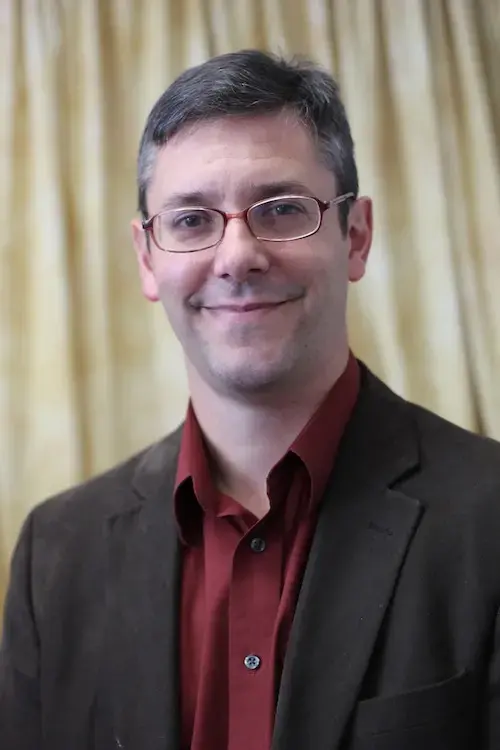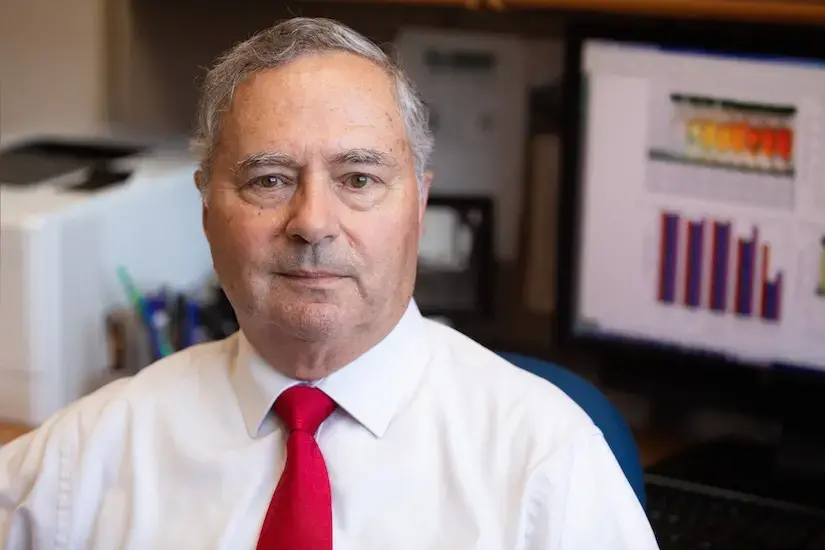In recent years, health-conscious consumers have demanded the removal of high-fructose corn syrup from a long list of foods. The result? According to the United States Department of Agriculture, over the last two decades high-fructose corn syrup production in the U.S. has dropped nearly 20%.
 George Huber
George Huber
But now, chemical engineers at the University of Wisconsin-Madison have found corn syrup might have a higher purpose than just sweetening soda. They have developed a process that can transform high-fructose corn syrup into a valuable pharmaceutical, showing it might be possible to repurpose the high-fructose corn syrup infrastructure for sustainable chemical production. The research appears in the March 14, 2024 issue of the journal Cell Reports Physical Science.
“We show how you could use corn syrup as a key feedstock and how that could be integrated into the high-fructose corn syrup industry,” says George Huber, a professor of chemical and biological engineering who oversaw the study with Professor Emeritus Jim Dumesic. “Rather than shut down those plants, you could turn them into chemical biorefineries that make a range of different products.”
Currently, many industrial chemicals are derived from petroleum products or from scarce natural resources. That’s why researchers are looking to biomass—like agricultural waste, switchgrass and other renewable resources—as alternative feedstocks for chemical production. By breaking down cellulose, a fibrous substance found in the cell walls of plants, via a process called acid-catalyzed hydrolysis, it’s possible to convert the biomass into precursor or platform chemicals. Using various processes, it’s then possible to upgrade these precursors into more high-value chemicals.
 Jim Dumesic
Jim Dumesic
One important chemical created by this process is 5-hydroxymethyl furfural, also known as HMF, which is widely used to produce liquid fuels, polymers, drug ingredients and dyes. In this project, the team, including graduate researchers Hochan Chang, Elise Gilcher and Min Soo Kim, catalyzed high-fructose corn syrup, which produces the highest known yield of HMF from any known biomass. They then performed experiments to determine the best way to convert the HMF into useful products. This project represents the culmination of more than 10 years of work in the research groups of Dumesic and Huber on the economical production of HMF and HMF-derived fuels, chemicals, and materials.
 Graduate students Min Soo Kim, Elise Gilcher and Hochan Chang.
Graduate students Min Soo Kim, Elise Gilcher and Hochan Chang.
In particular, they looked at a pathway to produce rehmanone A, a pharmaceutical ingredient traditionally collected from the rehmannia herb. The chemical had been produced from HMF in previous studies, but those methods required the use of toxic chemicals and a purification process that made it too expensive for commercial-scale production.
The UW-Madison team instead leveraged its understanding of catalytic reactions to design a greener and more economical process. Using acetone, they converted HMF to another chemical called HAH. That was then upgraded into rehmanone A after being etherized and run across a zirconium oxide catalyst, producing the target chemical with no toxic byproducts.
Chang says this project brings together many concepts he’s worked on in his PhD research. Besides rehmanone A, the process can be targeted at producing many other chemicals, some of which are previously undiscovered compounds with potential pharmaceutical applications.
To be economically viable, however, a techno-economic analysis shows the process relies on keeping things local; instead of shipping biomass to a central processing facility, it makes more sense to have regional centers that process the biomass to create chemicals. “For example, in Wisconsin there’s a lot of corn, so this process can start from glucose or high-fructose corn syrup,” says Chang. “So companies can diversify into not only selling food additives but platform chemicals as well.”
George Huber is the Richard L. Antoine Professor in Chemical and Biological Engineering.
The authors acknowledge support from the US Department of Energy-funded Great Lakes Bioenergy Research Center under award DE-SC0018409 and the Department of Energy under contract DE-SC0014058.
Top image credit: iStock